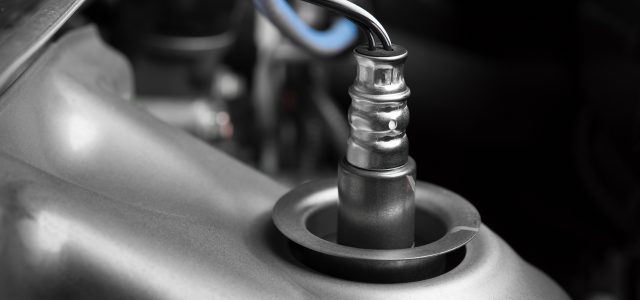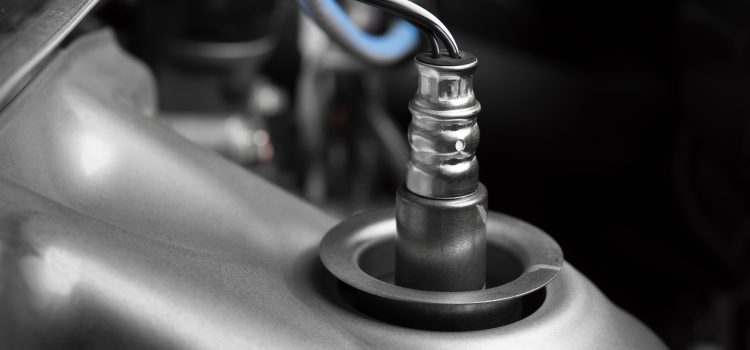

Signs You Need a New Oxygen Sensor in Your Car
Car Repair July 9, 2018 0
Not many car owners know about their O2 sensor. It’s one of those car parts that serves a valuable purpose, but most people aren’t even aware of its existence.
Newer cars have better O2 sensors than older cars, which means you won’t have to replace them as frequently as you once did. If you have a car that’s even 10 or 15 years old, you probably don’t have to worry about an O2 sensor replacement for around 100,000 miles.
Still, when an O2 sensor fails, there are signs. Here, we’ll give you some of the symptoms of failing O2 sensors, as well as some steps you can take to fix the issue.
What Does an O2 Sensor Do?
The Oxygen sensor, or O2 sensor, is responsible for regulating and monitoring your vehicle emissions. It never used to matter how dirty the emissions coming from your car were. Now, with a more environmentally conscious world, we’re keeping track of these things with car parts like the oxygen sensor.
The O2 sensor sits in the exhaust pipe and reads how much unburned oxygen remains in the exhaust coming from the engine. From there, the sensor alerts the vehicle and tells it whether or not to change the fuel mixture, based on its readings.
The computer in your vehicle will take the reading of an oxygen sensor and adjust the fuel mixture to allow for more or less unburned oxygen. Once the fuel mixture changes, the O2 sensor responds with a different reading.
With a functioning O2 sensor and vehicle computer, the emissions will bounce around and end up in the happy middle of oxygen burning. Here, your car will run efficiently without releasing too many harmful emissions into the environment.
If the O2 sensor is faulty, your car will burn too much fuel and release too many emissions. You may fail an emissions test at this point, but you’ll probably notice some of the bad O2 sensor symptoms by then. Your car will start to run less efficiently, and you’ll be stopping at the pump far more often.
How Often Should You Replace Your O2 Sensor
Like almost anything in cars, O2 sensors have become more durable over the recent years. If you have a car from the 1970’s or 80’s, it will use unheated 1 or 2 wire O2 sensors. You need to replace these sensors every 30,000 to 50,000 miles.
If your car is from the 90’s, it will have a 3 or 4 wire O2 sensor, and you can get away with replacing it after around 60,000 miles. Cars today have multiple O2 sensors, and you won’t have to purchase a replacement for nearly 100,000 miles.
Since a failing O2 sensor usually means car troubles, it’s not a bad idea to change your O2 sensor more frequently than the recommendation. The O2 sensor cost isn’t especially high, so there’s an argument to be made that replacing these sensors sooner will save you some headache in the long run.
Signs You Need an O2 Sensor Replacement
Although not many car owners know much about their oxygen sensor, they’ve probably noticed when it starts to deteriorate. You might be experiencing some of the symptoms that you need an O2 sensor replacement, but don’t know what’s wrong with your car.
There are a few signs that point to your car’s need for a new O2 sensor. If you have recently experienced any of the following vehicle symptoms, bring your car in for a checkup and tell your mechanic you think your O2 sensor is acting up.
Poor Fuel Efficiency
One of the sure-fire signs that you need to replace your O2 sensor is when you see your gas mileage start to dip. The O2 sensor helps regulate how much fuel your car uses by testing the oxygen. If it’s not working properly, you’ll be stopping at the pump far more often than you were in the past.
It can sometimes be difficult to tell for sure when you’re using more gas than you were. The O2 sensor can deplete over time, so it might not be an overnight revelation.
The best advice we can give here is to record how many miles you drive on a full tank. Fill your tank, then record how many miles until the tank is empty again. Complete this process a few times, and you should see a downward trend if your O2 sensor is failing.
Keep in mind that multiple factors contribute to fuel efficiency. You should probably take your car to the shop and let a professional diagnose the problem. It could be the O2 sensor, but you could be having a problem elsewhere as well.
Check Engine Light
The check engine light is one of the mysterious elements of a vehicle for most car owners. They’ll see it come on but think their car is driving fine so that they won’t bring it in for service.
There are quite a few car problems that result in a check engine light, including an electrical issue. Still, one of the hallmarks of a bad O2 sensor is a check engine light, and you should probably bring your car to your local mechanic.
If the check engine light comes on when you only have a few thousand miles on your car, it probably won’t be the O2 sensor. If you’ve been driving that car for a while, though, the O2 sensor probably deteriorated over time, leading to the check engine light popping-on in your vehicle.
Failing an Emissions Test
Most of the people who fail an emissions test have a problem with their O2 sensor. Some outlier cars are burning fuel at a higher rate, but most companies design their cars to pass even the strictest emissions tests in their target countries.
If your car underwent an emissions test and failed, you can safely assume you need a new O2 sensor – especially if the car is older. Once you have this fixed, you should be able to pass without a problem. Failing an emissions test is one of the most O2 specific symptoms we can offer you.
Rough Idling
When your car is idle, it should be relatively calm. You shouldn’t hear too much sound or feel the car shake very much. If you do, it’s a sign that there is probably a problem somewhere under the hood.
One of the problems that lead to rough idling is a bad O2 sensor. You might also experience misfiring if this is the case. Since the O2 sensor helps regulate the engine, a faulty one will mean your engine won’t run as smoothly.
While all of these signals could mean any number of things, you can assume your O2 sensor is worn out if you experience multiple symptoms. Still, we recommend visiting a mechanic if you aren’t sure. It’s not a good idea to assume what’s wrong with your car, and a professional set of eyes never hurt anything.
Replacing the Oxygen Sensor
While replacing an oxygen sensor isn’t a great beginner DIY project, you can certainly complete it by yourself without much training. If you’re comfortable working on cars, you likely won’t have any problems changing your O2 sensor.
Other than some hand tools, a replacement sensor, and a jack, all you’ll need is an OBD II scanner to determine which O2 sensor has failed. The first thing you should do is connect this scanner to your car to find out where the problem originated.
Next, raise your car with the jack and secure it. You should lift the side that’s closest to the O2 sensor you’re replacing. When you locate the sensor, disconnect it from the cord that connects it to the vehicle’s electronic system.
Now, you can use a wrench to remove the old oxygen sensor and install the new one. Make sure to check your replacement against the O2 sensor you removed to confirm that you have the right product.
Finally, you can install the new O2 sensor and reconnect it to the rest of the car. Check the OBD II scanner again and clear the codes. Once you do this, you can start your car and should notice the strange idling, misfires, and check engine light have all gone away.
If you don’t have the tools or don’t feel comfortable completing this job on your own, you can always take your car to the mechanic and have them service it there.
The Importance of an O2 Sensor
A lot of car owners – especially those who don’t work on cars themselves – tend to ignore minor problems with their vehicles as they pop up. A faulty O2 sensor can seem insignificant, but the problems it creates can lead to bigger issues down the line.
The reduced fuel efficiency that comes along with having a faulty O2 sensor is usually enough for some people to get a fix. This is gas money coming directly out of your pocket every week, so you’ll save money by finally replacing your old O2 sensor.

No comments so far.
Be first to leave comment below.